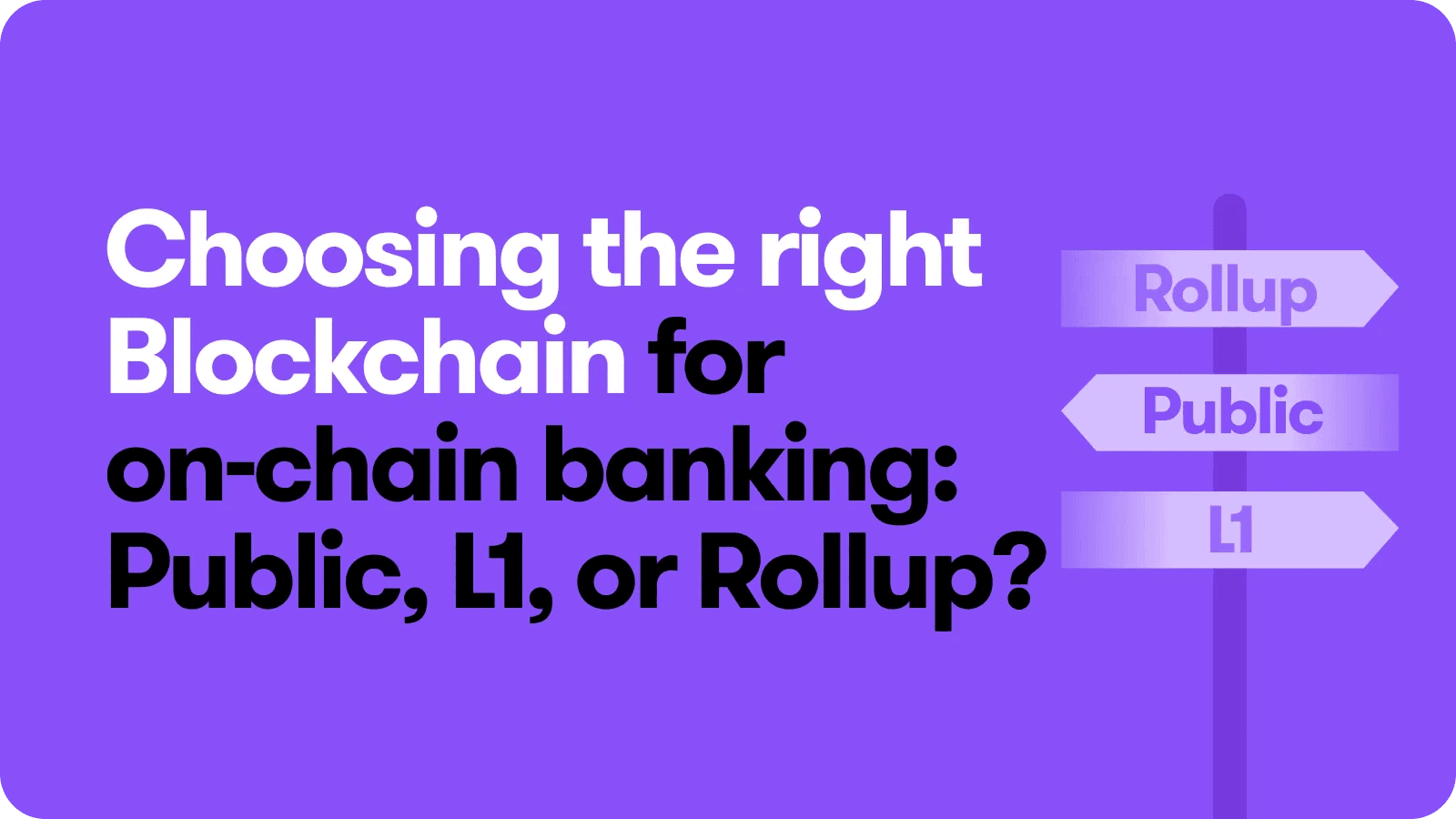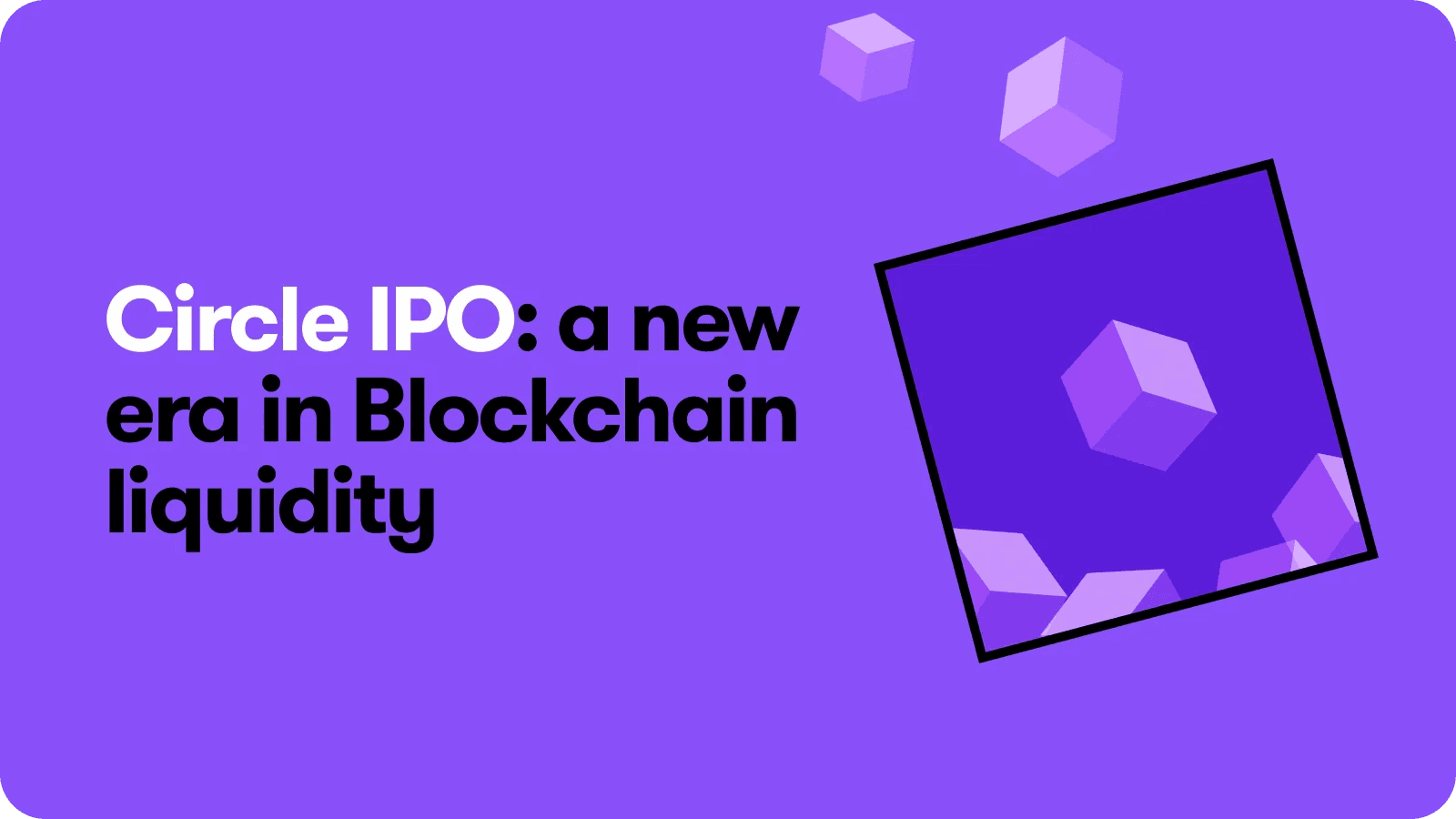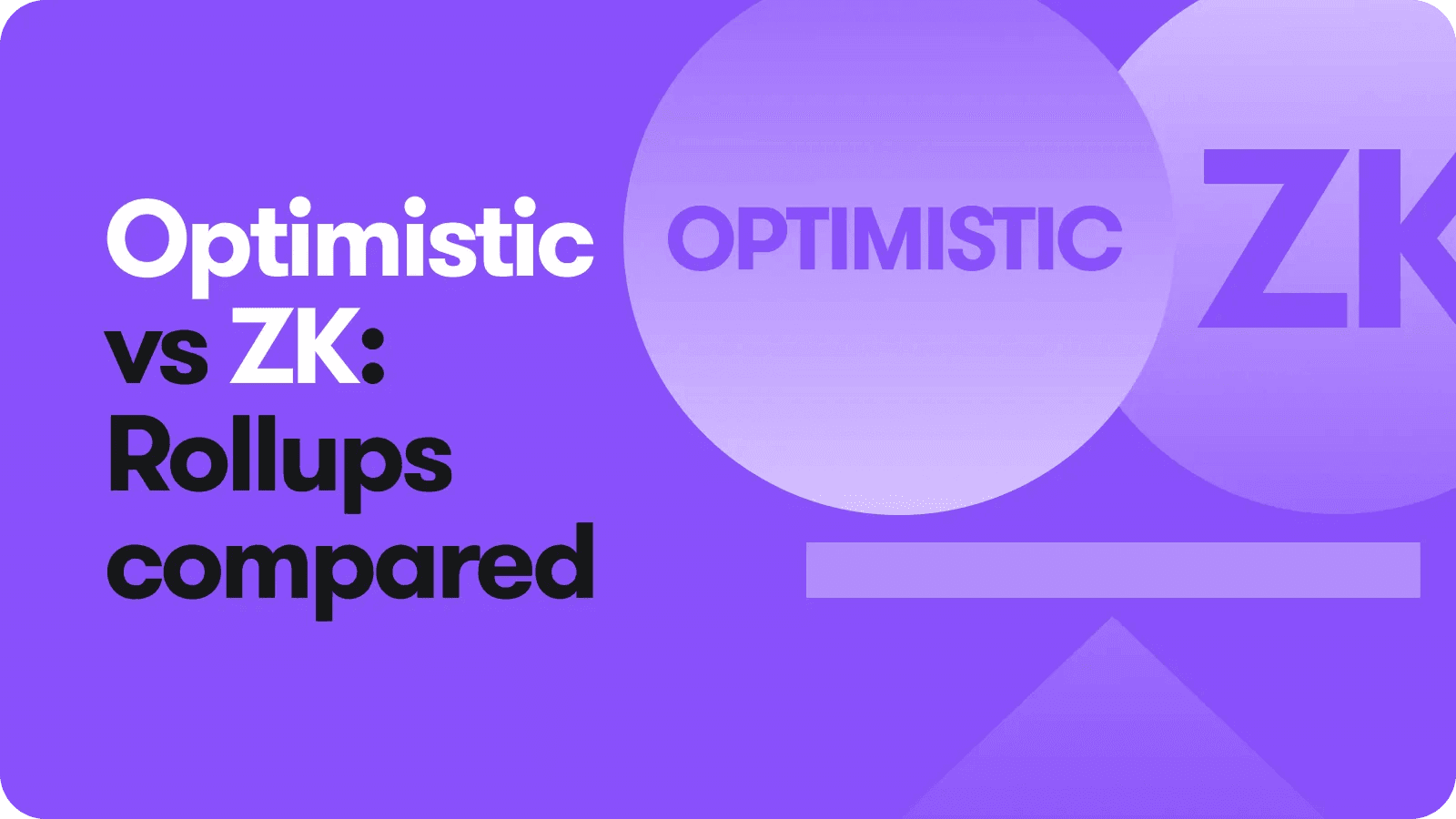
Choosing the Right Blockchain Architecture for On-Chain Banking
20 May 2025How to Choose the Right Blockchain Infrastructure for Banking Use Cases
In 2025, the modern banking and financial services landscape is more competitive than ever, posing challenges for traditional players while opening the door for a much-needed digital overhaul. As agile, disruptive fintechs continue to reshape and elevate customer expectations with seamless, user-first app experiences, banks are feeling the pressure to accelerate digital transformation as a matter of urgency.
With legacy systems creaking under the weight of modern demands, financial institutions are quickly being pushed towards blockchain-based infrastructure. However, by their very nature, banks are typically conservative and ruthlessly pragmatic, and as such, the infrastructure they choose must prioritize compliance, control, performance and privacy. That makes most public blockchains a non-starter. Institutions don’t want to share infrastructure with retail traders and memecoins, they want execution environments tailored to their needs. With banks and financial institutions seriously exploring the merits of blockchain tech to modernise infrastructure, the question isn’t ‘if’ but ‘how’ to adopt it. In this piece, I will explore three key deployment strategies for consideration.
1. Public Chains: Ethereum, Solana, Public L2s like Polygon & Optimism
Pros
For banking and financial services operators, the blockchain imperative is no longer a ‘nice to have’, it has fast become a prerequisite for operational longevity. Public chains like Ethereum and Solana are propped up by demonstrable decentralization, massive ecosystems and strong network effects, providing instant access to stablecoins, DeFi integrations, oracles and battle-tested developer tooling. Public L2s like Optimism and Polygon offer lower fees and better scalability than Ethereum L1, with minimal setup.
Cons
However, these networks are extremely noisy. You’re competing with memecoins and retail speculation, which means unpredictable fees and congestion. Data is also public, making compliance and privacy difficult, and while you don’t need to manage infrastructure, you sacrifice control over gas models, upgrades and access. That’s a dealbreaker for regulated financial entities.
2. Launching a New Layer 1 Chain (e.g., Cosmos SDK, Ethereum Sidechain)
Earlier this year, Inversion Capital revealed plans to launch a custom L1 blockchain built on the Avalanche network, aiming to onboard traditional businesses into the blockchain ecosystem. The move is geared towards bolstering Inversion’s distinctive private equity strategy, which centers on acquiring established companies and integrating blockchain technology into their operations.
Pros
Building your own L1 offers maximum control, enabling builders to design a protocol from scratch, customizing consensus, transaction logic, access control, compliance mechanisms and even governance. For institutions with specific jurisdictional needs or cross-border priorities, this is an enticing proposition.
Cons
Launching a new L1 Chain is a massive undertaking which involves building a validator network, maintaining uptime, handling security patches and ensuring long-term scalability. Additionally, you lose access to the liquidity and network effects of Ethereum and other major chains. Bootstrapping from zero in a fragmented ecosystem is slow, risky, and expensive.
3. Deploying a Custom L2 Rollup on Ethereum or Another Major Chain
Deutsche Bank, Germany’s largest financial institution, recently announced that it’s developing its own L2 solution on Ethereum. Leveraging ZKsync technology, the bank aims to tackle compliance hurdles and bridge the divide between decentralized public blockchains and the regulated financial sector. Deutsche Bank’s platform is designed to boost transaction efficiency while embedding robust compliance controls, combining Ethereum’s scalability and transparency with strict regulatory adherence.
Pros
This strategy is the rising star of enterprise blockchain deployment. With rollup-as-a-service platforms and modular stacks (like OP Stack, Polygon CDK, zkStack), banks can deploy their own execution environment, customized for their performance, privacy and compliance needs, while still inheriting Ethereum-level security. You get dedicated throughput, control over sequencers and governance, privacy-enhancing features and the ability to phase in decentralization over time. Most importantly, deployment is fast. Implementation partners can get institutions live in weeks.
Cons
There’s operational complexity to consider, as sequencers, provers, bridges and state commitments all require oversight and management. Depending on the rollup type, there may also be withdrawal delays or finality quirks that must be accounted for in user experience and back-office processes.
The bottom line
As more and more banks embrace the benefits of blockchain, the solution of choice won’t be Ethereum, Solana or even a new L1. It’ll be custom rollups that offer the right mix of control, scalability, security and compliance, enabling them to tailor execution logic, implement privacy layers, set access rules and still benefit from Ethereum’s security and interoperability. Crucially, they’ll avoid the pitfalls of going it alone and the pressure of maintaining a validator network. They’ll be able to enjoy dedicated, configurable infrastructure, designed for the rapidly evolving real-world needs of regulated financial institutions.
At Gateway.fm, we are greatly simplifying blockchain deployment for banks with our ‘Gateway Blueprints’, making the process fast, affordable and code-free. Powered by cutting-edge ZK technology, we are delivering bank-grade privacy, tamper-proof security and built-in regulatory compliance, enabling institutions to process transactions in real-time, with cryptographic guarantees stronger than traditional systems, combining the efficiency of blockchain with the privacy and trust their customers and regulators expect. At our core, we fundamentally understand the needs of banking clients who simply must have full control over their own system – an option that public networks can’t facilitate.
Other blog posts
Want to read more? Discover our other articles below!



